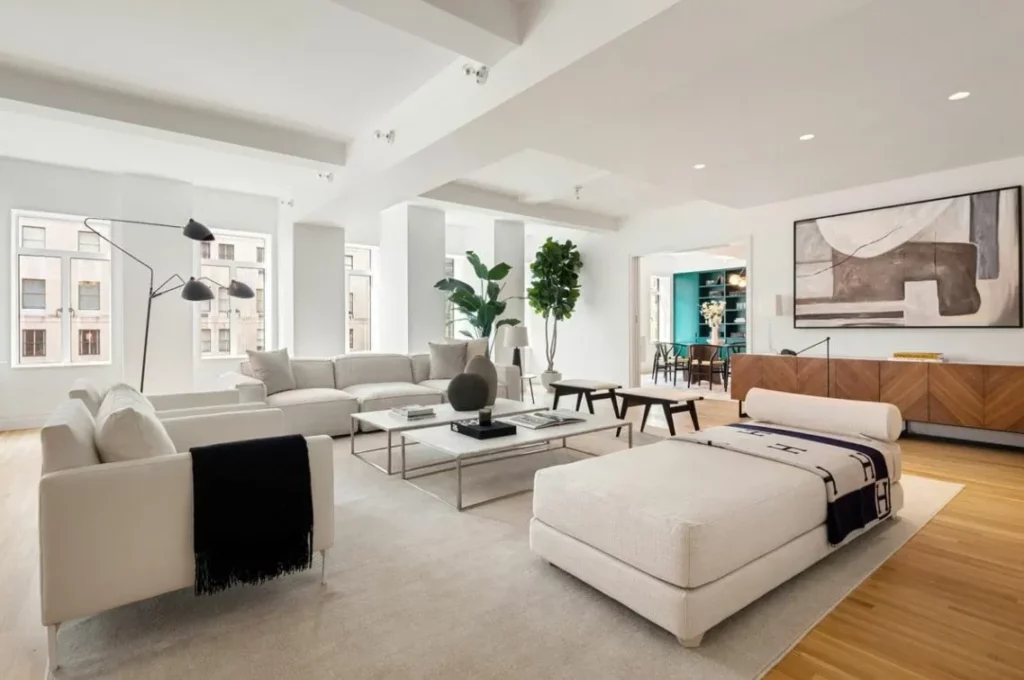As the saying goes, ‘less is more’, and this indeed rings true in the realm of home remodeling. The concept of minimalist design has taken root in contemporary architecture and interior design, stripping away the unnecessary elements to reveal a space that is clean, functional, yet aesthetically appealing.
This style not only embodies simplicity but also underscores an awareness of space and materials used. The appeal of minimalism lies not just in its visual impact but also in its philosophical undertone – it posits a lifestyle that values quality over quantity.
With society veering towards a culture of excess, minimalist home remodeling offers an antidote to cluttered living spaces and hectic lifestyles. It seeks to cultivate serenity within domestic environments while promoting sustainable practices through mindful consumption.
However, achieving the perfect balance between function and aesthetics requires careful thought and planning; it’s no small feat given our natural tendency towards accumulation. Therefore, understanding the principles behind minimalist home remodeling becomes key for those yearning for simpler living spaces that embody tranquillity without sacrificing functionality or comfort.
Understanding Minimalist Home Remodeling
Minimalist home remodeling embodies a design philosophy that prioritizes functionality and simplicity, stripping down elements to their essential quality and achieving an aesthetic of elegance through understatement. It is not just about decluttering or depersonalizing a space; rather, it is a thoughtful process that involves careful planning and intentional decision-making.
The goal is to create spaces that are serene, uncluttered, and inviting while preserving the core architectural elements of the building. This approach often places emphasis on the use of natural materials, neutral color palettes, clean lines and shapes as well as open floor plans for an overall sense of calmness and balance.
In order to understand minimalist home remodeling more vividly, it’s crucial to delve into its key principles. Foremost among these tenets are function over form and less being more. To clarify this further – in minimalist design every element serves a purpose; there should be no superfluous items merely for decoration or ornamentation. For instance, furniture pieces are usually streamlined with minimal detailing but high on usability. Similarly lighting fixtures might combine visual aesthetics with energy efficiency or windows may be designed larger not just for better views but also to allow ample natural light thereby reducing dependence on artificial sources.
While minimalist design seems simple by definition—minimal components leading to maximum impact—it requires skilled execution for successful implementation in home remodeling projects. Each element within the space must work together harmoniously without overwhelming or conflicting with one another—a delicate balancing act that calls for professional expertise in understanding spatial relationships, material compatibility and functional demands of modern lifestyles.
Achieving this unity amidst diversity allows homeowners to identify themselves within their remodeled homes where every corner subtly speaks volumes about their personality without ostentatious display – resonating deeply with individuals seeking comfort in authenticity rather than pretentious grandeur.
Tips for Minimalist Home Remodeling
Embarking on a journey towards a clutter-free living space can be an exhilarating yet challenging process; however, the below tips promise to guide towards achieving that serene, streamlined environment.
Prioritizing functionality over aesthetics is the first step in minimalist home remodeling. This involves eliminating unnecessary items and retaining only those that serve a specific purpose. The ultimate aim should be to create a versatile space where every piece of furniture or decor enhances utility while also complementing the overall aesthetic appeal.
The second strategy revolves around embracing simplicity in design elements, including color schemes, furniture selections, and room layouts. A defining feature of minimalism is its emphasis on neutral tones and sleek lines which lend an air of tranquility and openness to spaces. When selecting furnishings, opt for pieces with clean shapes and understated elegance rather than elaborate designs or bold colors. The choice of materials also plays a crucial role in establishing this simplistic vibe; natural elements like wood or stone are often preferred for their innate beauty that requires no additional adornment.
Incorporating ample storage solutions is another essential aspect of minimalist home remodeling which helps maintain an uncluttered appearance without compromising practicality. Hidden storage units such as built-in cabinets, under-bed drawers or multi-purpose furniture not only maximize available space but also contribute to maintaining visual harmony by keeping everyday items out of sight.
In essence, effective minimalist home remodeling involves striking a delicate balance between function and form while adhering to principles of simplicity and efficiency – it’s about creating a calm oasis amidst the chaos of modern life while fulfilling all necessary domestic needs within the confines of reduced physical space.
Harvesting Home Comfort: Embracing Farmhouse Remodeling Trends


